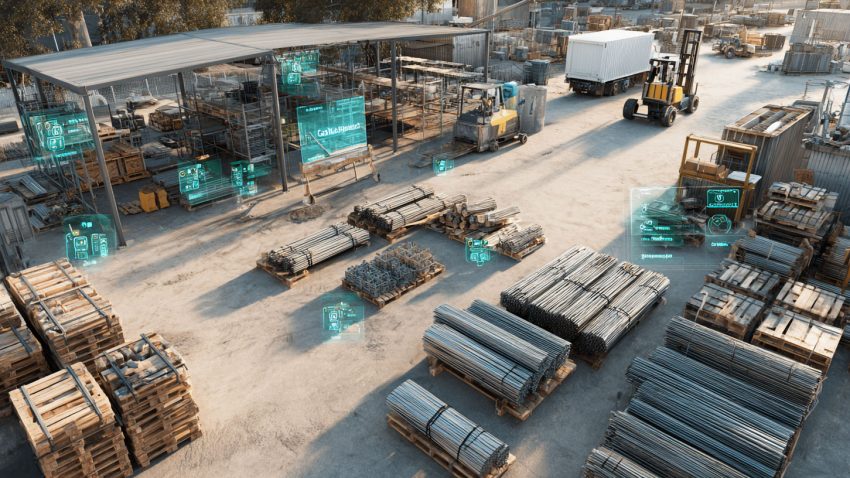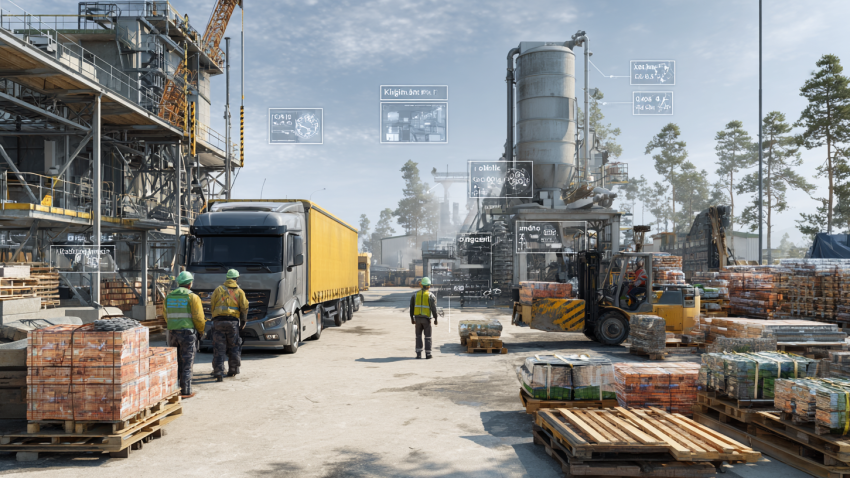Drone Surveying Best Practices for Construction Superintendents: Precision Mapping for Smarter, Faster Project Management
Table of Contents:
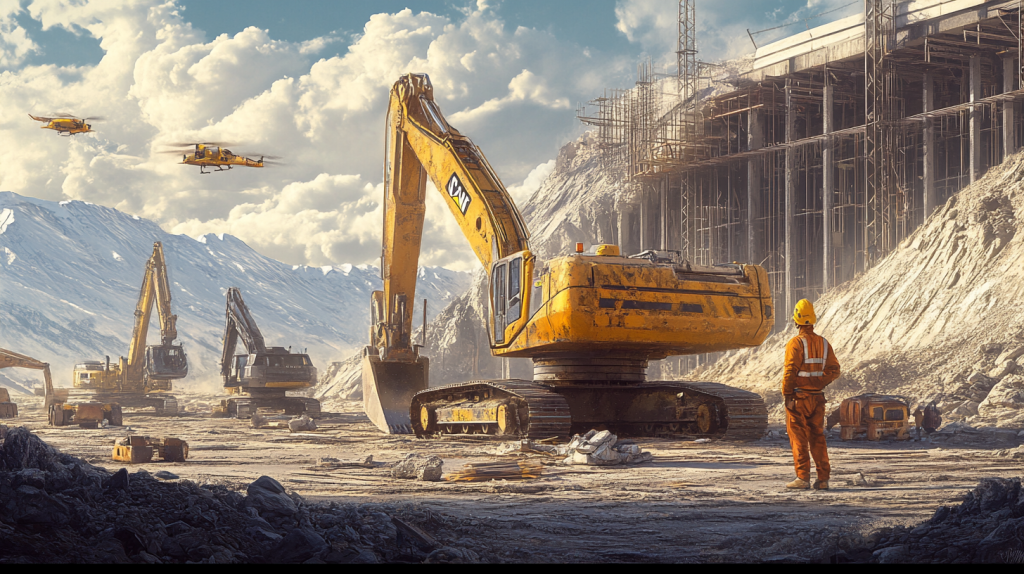
Drone technology is reshaping the construction landscape, offering superintendents powerful tools for precision mapping, efficient surveying, and enhanced site management. By leveraging drones, construction professionals can reduce costs, improve accuracy, and make better-informed decisions. These unmanned aerial vehicles (UAVs) have become indispensable for tasks ranging from topographic mapping and progress monitoring to safety inspections and resource management.
The use of drones in construction isn’t just about adopting cutting-edge tools; it’s about transforming how projects are executed. With real-time data and advanced analytics, drones empower superintendents to stay ahead of potential challenges and deliver projects on time and within budget. However, to fully capitalize on the benefits of drone surveying, it’s crucial to implement best practices tailored to specific project needs.
In this comprehensive guide, we’ll explore everything from the basics of drone surveying to advanced integration strategies and best practices. Whether you’re a seasoned superintendent or just beginning to explore drone technology, this guide will help you unlock the full potential of drones in construction.
What is Drone Surveying, and Why is It Essential for Construction?
Drone surveying involves the use of UAVs equipped with high-resolution cameras and sensors to capture aerial data from construction sites. This data is then processed to generate maps, 3D models, and analytics that provide actionable insights into site conditions. Unlike traditional surveying methods, drones can cover vast areas quickly, accurately, and with minimal labor.
Drone surveying is particularly essential in construction for its ability to enhance efficiency and reduce costs. Tasks like topographic mapping, progress tracking, and environmental impact analysis can now be completed in a fraction of the time, freeing up resources for other critical activities.
Key Benefits
- Reduced Surveying Time: Complete in hours what used to take days.
- Enhanced Accuracy: Advanced sensors provide precise data for critical planning.
- Real-Time Insights: Receive instant updates for proactive decision-making.
Best Practices
- Invest in Quality Drones: Ensure UAVs have the necessary sensors for your project needs.
- Train Your Team: Certified operators are key to successful drone operations.
- Analyze Data Thoroughly: Use photogrammetry or LiDAR tools for in-depth insights.
Drone surveying is an essential tool for modern construction projects. It enhances efficiency, improves safety, and provides superintendents with the data they need to manage sites effectively.

How to Integrate Drones into Construction Projects
Integrating drones into construction projects involves more than just purchasing equipment—it requires strategic planning, training, and technological integration. Superintendents must assess their project’s unique needs, select the right drones, and ensure regulatory compliance.
Start by identifying how drones can benefit your project. For example, if you’re focusing on precision mapping, invest in drones with GPS or LiDAR capabilities. For progress monitoring, choose UAVs with time-lapse photography features. Once the equipment is selected, ensure your team is trained to operate the drones safely and efficiently.
Technology integration is another critical step. Platforms like StruxHub allow you to combine drone-generated data with project schedules, improving collaboration and decision-making. Finally, establish clear policies for drone use to ensure compliance with local regulations and safety protocols.
Key Benefits
- Streamlined Processes: Reduce manual effort and improve operational efficiency.
- Real-Time Monitoring: Track progress and identify issues as they occur.
- Enhanced Collaboration: Share drone data with stakeholders for better coordination.
Best Practices
- Define Clear Objectives: Know what you want to achieve with drone technology.
- Train Operators: Certified operators ensure safety and compliance.
- Leverage Project Management Tools: Use platforms to integrate drone insights with construction workflows.
Integrating drones into construction projects offers immense value, but success requires careful planning, training, and the right tools. When implemented correctly, drones enhance efficiency and decision-making.
Related Articles:
Top 10 Applications of Drones in Commercial Construction
The Best Guide to Delivery Management Systems (DMS) for Commercial Construction
45 Benefits and Tips of Construction Management Software for Superintendents
What Are the Best Practices for Precision Mapping with Drones?
Precision mapping with drones allows superintendents to create highly accurate site maps and 3D models. However, achieving these results requires adherence to proven best practices. Start by planning your flight paths using drone mapping software to ensure consistent and comprehensive coverage of the survey area. Flying at the right altitude is also critical for balancing resolution with area coverage.
Sensor calibration is another important step. Drones equipped with LiDAR or high-resolution cameras must be calibrated before each flight to ensure accurate data collection. Post-flight processing with photogrammetry software converts raw data into usable maps and models, making it easier for teams to interpret and act upon the results.
Key Benefits
- Detailed Site Analysis: Capture every detail of the terrain for better planning.
- Improved Collaboration: Share visual models with stakeholders for clearer communication.
- Time Savings: Complete surveys in hours instead of days.
Best Practices
- Plan Overlapping Routes: Ensure no gaps in the coverage area.
- Calibrate Equipment: Verify that sensors are functioning accurately before each flight.
- Process Data Professionally: Use robust software for data analysis and visualization.
By following best practices, precision mapping with drones becomes a reliable tool for superintendents. It ensures detailed, actionable insights while saving time and resources.
How Can Drones Improve Safety on Construction Sites?
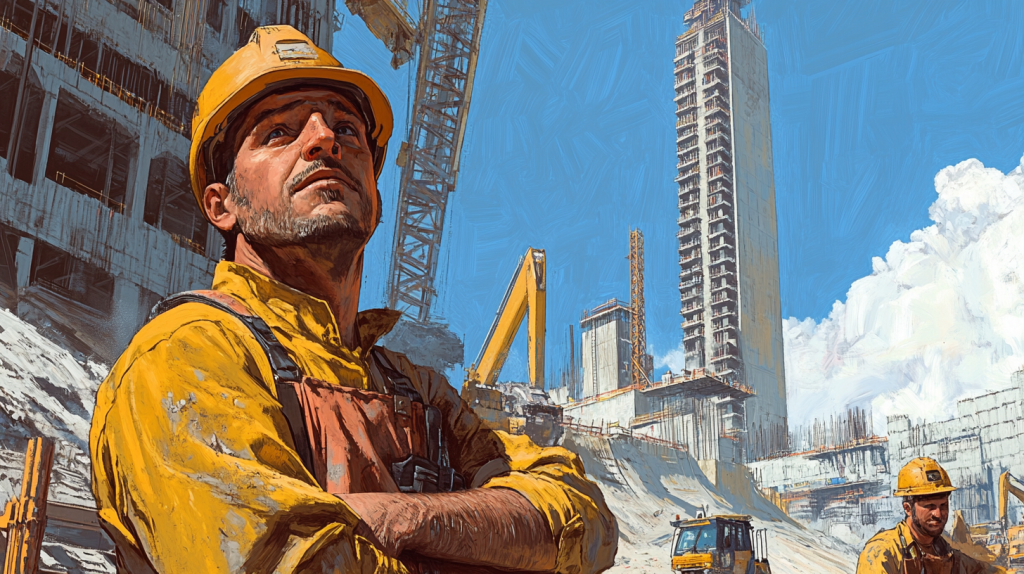
Drones have become a vital tool for enhancing safety on construction sites. By reducing the need for workers to access hazardous areas, drones minimize exposure to risks such as falls, structural instability, or dangerous terrain. With their ability to capture high-resolution images and video, drones can inspect areas that are otherwise challenging or unsafe for manual inspection.
For example, drones equipped with thermal imaging sensors can identify heat signatures, helping superintendents detect potential fire hazards, overheating machinery, or electrical malfunctions. Similarly, drones can monitor scaffolding, rooftops, and other elevated areas without requiring workers to climb ladders or use harnesses.
Drones also play a proactive role in safety compliance. Real-time data allows superintendents to monitor site conditions, identify unsafe practices, and take corrective actions immediately. This ensures that safety protocols are consistently enforced throughout the project lifecycle.
Key Benefits
- Risk Mitigation: Reduces worker exposure to dangerous conditions.
- Proactive Hazard Identification: Detects potential safety issues early.
- Improved Compliance: Ensures adherence to safety regulations with real-time monitoring.
Best Practices
- Schedule Regular Inspections: Use drones to conduct routine safety audits.
- Invest in Thermal Imaging: Enhance hazard detection capabilities with advanced sensors.
- Communicate Findings: Share drone data with site teams to implement corrective measures.
Drones offer a revolutionary approach to construction safety, empowering superintendents to identify risks early and ensure a safer work environment for everyone involved.
Related Articles:
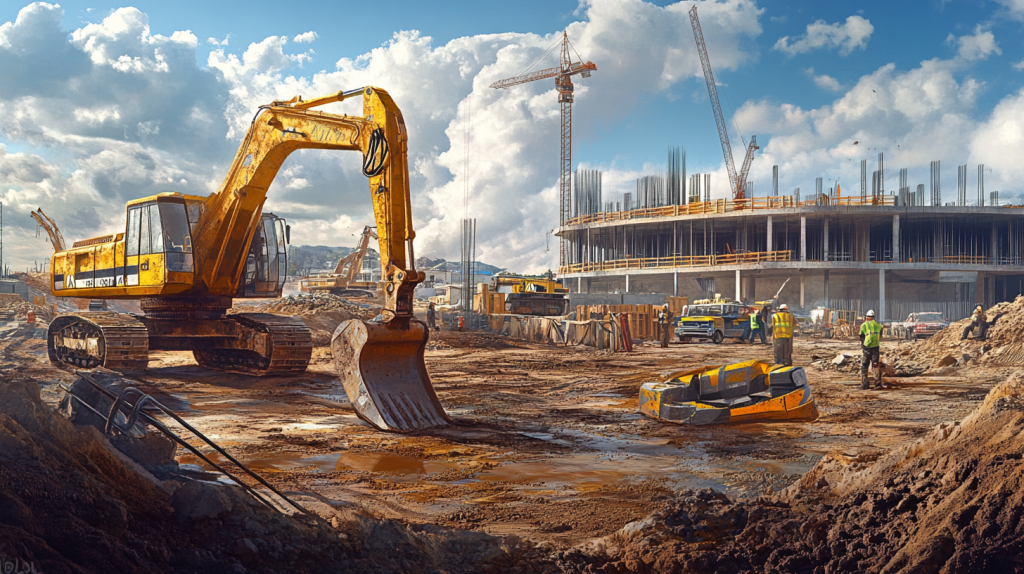
What Role Does Data Processing Play in Drone Surveying?
Data processing is the backbone of drone surveying, transforming raw data captured by UAVs into actionable insights. High-resolution images, LiDAR scans, and GPS data collected during flights are processed using specialized software to generate detailed maps, 3D models, and analytics.
For example, photogrammetry software stitches together aerial images to create accurate orthomosaic maps, while LiDAR data can be used to produce elevation models. These outputs are invaluable for tasks like site planning, progress tracking, and identifying topographical challenges.
The accuracy of data processing directly impacts the quality of insights superintendents can derive. Inconsistent or poorly processed data can lead to errors in planning and execution, potentially delaying the project or increasing costs. As such, it’s essential to use reliable software and have skilled operators manage the processing workflow.
Superintendents can integrate processed data into project management platforms like StruxHub to align survey results with construction schedules and site operations. This integration enhances collaboration among stakeholders, ensuring that everyone has access to accurate, up-to-date information.
Key Benefits
- Accurate Outputs: High-quality data ensures reliable maps and models.
- Enhanced Decision-Making: Provides insights that inform project planning and execution.
- Seamless Integration: Compatible with construction management platforms.
Best Practices
- Use Reliable Software: Invest in tools like Pix4D or DroneDeploy for accurate processing.
- Train Operators: Ensure team members understand data interpretation and processing workflows.
- Validate Outputs: Cross-check processed data for accuracy before integrating it into workflows.
Data processing turns drone-captured information into actionable insights, making it a critical component of drone surveying. By prioritizing accuracy and integration, superintendents can maximize the value of drone technology.
Related Articles:
Superintendents: Effective Training Strategies for Construction Management Software Users
The Best Daily, Weekly, and Monthly Checklist for Construction Superintendents
How Do You Choose the Right Drone for Your Project?
Selecting the right drone for your construction project depends on the specific needs and objectives of the job. Factors such as site size, the type of data required, and budget constraints all play a role in determining the ideal UAV.
For precision mapping, drones equipped with GPS and LiDAR sensors are essential. These drones provide high-resolution imagery and elevation data, making them suitable for topographic surveys and detailed site analysis. For progress tracking, drones with time-lapse photography capabilities are more appropriate, allowing you to monitor changes over time.
Another consideration is flight time and range. Larger sites may require drones with extended battery life and longer flight ranges to cover more ground without interruptions. Payload capacity is also critical if you plan to use additional sensors like thermal imaging or multispectral cameras.
Ease of use and compatibility with software platforms are equally important. Look for drones that integrate seamlessly with tools like StruxHub to simplify data processing and collaboration.
Key Benefits
- Tailored Solutions: Choose drones designed for specific tasks like mapping or monitoring.
- Enhanced Efficiency: Drones with extended flight times cover more ground in less time.
- Improved Integration: Seamless compatibility with project management platforms streamlines workflows.
Best Practices
- Define Project Goals: Identify the primary tasks the drone will perform.
- Research Drone Features: Compare specifications like sensors, battery life, and range.
- Consult Experts: Seek advice from UAV specialists to ensure the best fit for your project.
Choosing the right drone is a critical step in leveraging UAV technology effectively. By considering your project’s unique needs and investing in compatible tools, you can ensure optimal results.

StruxHub
Experience the power of StruxHub today and witness firsthand how it can revolutionize your construction operations.
Unlock the Full Potential of Your Construction Projects with StruxHub
StruxHub enhances efficiency and coordination across all project phases, providing a single source of truth that eliminates silos and fosters collaboration. Real-time updates, financial management tools, and seamless commvunication features ensure that all team members and stakeholders are aligned and informed, reducing the risk of errors and delays. With comprehensive solutions for document management, risk mitigation, and quality control, StruxHub maintains project integrity and safety, while mobile access and integration capabilities further enhance project flexibility and efficiency.
StruxHub’s Key Features and Benefits:
- Advanced Delivery Management: Automate and optimize your delivery schedules, ensuring materials arrive just in time, every time.
- Site Communication: Utilize georeferenced maps and instant messaging to keep every team member informed and aligned.
- Construction Materials Management: Track inventory levels and manage materials procurement with ease, reducing waste and avoiding project delays.
- Construction Safety & Inspection Workflows: Implement customizable mobile forms for conducting safety inspections and managing compliance documentation effortlessly.
- Short-Term Scheduling: Visualize project tasks with detailed floor plans, linking each activity to specific locations for better planning accuracy.
- Construction Resource Management: Efficiently allocate personnel and equipment, maximizing productivity and reducing idle time.
StruxHub’s Product Offering:
- StruxHub Deliveries: Simplifies the coordination of incoming deliveries, ensuring materials and equipment are precisely timed to project needs.
- StruxHub Logistics: Offers intelligent site logistics planning, from crane scheduling to space allocation, for smoother operations.
- StruxHub Safety: Elevates on-site safety standards with easy-to-use tools for inspections, permits, and incident reporting.
- StruxHub Scheduling: Enhances project timelines with intuitive scheduling tools that ensure tasks are completed efficiently and on time.
With StruxHub, construction companies can look forward to a streamlined, more efficient project execution that delivers on time and within budget. Embrace the power of innovation and take your construction projects to the next level.
Don’t miss out on the opportunity to optimize your construction management processes with StruxHub. Sign up for a free demo today. Let’s build smarter, together.

StruxHub: Revolutionizing Project Management in Large Commercial Construction
FAQs
What are the key benefits of drone surveying in construction?
Drone surveying has become a game-changer in construction, offering numerous benefits that enhance efficiency, accuracy, and safety. One of the primary advantages is the speed with which drones can cover large areas. Traditional surveying methods often require significant manual effort and time, while drones can accomplish the same tasks in a fraction of the time. For example, a drone can survey a 50-acre construction site in a matter of hours, compared to days with traditional tools.
Another significant benefit is accuracy. Equipped with advanced GPS, LiDAR, and high-resolution cameras, drones can capture data with millimeter precision. This accuracy is critical for tasks like topographic mapping, where even minor errors can lead to costly mistakes in planning and execution.
Safety is another critical advantage. Drones can access hard-to-reach or hazardous areas, reducing the need for workers to operate in potentially dangerous conditions. For example, drones can inspect scaffolding, rooftops, or unstable structures without putting workers at risk.
Additionally, drones provide real-time insights that empower better decision-making. Superintendents can monitor site progress, detect issues early, and communicate updates to stakeholders. The ability to process and share this data quickly improves collaboration and ensures everyone is on the same page.
Lastly, drone surveying is cost-effective. While the initial investment in drone equipment and training may seem high, the long-term savings in labor costs, time, and error reduction more than justify the expense.
How do drones achieve precision mapping?
Drones achieve precision mapping through a combination of advanced hardware, software, and strategic planning. High-resolution cameras and sensors, such as LiDAR, are the foundation of drone mapping. These devices capture detailed aerial imagery and data points that are then processed into accurate maps and 3D models.
The process begins with flight planning. Using specialized software, operators define the drone’s flight path to ensure consistent and overlapping coverage of the survey area. This step is crucial for achieving accuracy, as it eliminates gaps in the data and ensures that every detail of the site is captured.
During the flight, the drone’s GPS system records exact location data for each image or data point. This geotagging is essential for aligning the data during post-flight processing. Some drones also use ground control points (GCPs)—marked locations on the ground that serve as reference points to enhance the precision of the final output.
After the flight, the collected data is processed using photogrammetry or LiDAR software. Photogrammetry stitches overlapping images together to create a detailed map or 3D model, while LiDAR measures distances using laser pulses for even greater accuracy. These tools not only produce precise visual representations but also allow for the extraction of valuable data, such as elevation measurements or volume calculations.
Precision mapping with drones is a meticulous process that combines advanced technology with skilled operation and data analysis. When done correctly, it provides construction teams with highly accurate and actionable insights.
Are drones cost-effective for construction projects?
Yes, drones are highly cost-effective for construction projects, particularly when considering their ability to save time, reduce labor costs, and improve overall project accuracy. While the initial investment in drone equipment and operator training may seem significant, the long-term savings make drones a valuable addition to any construction team.
One of the most obvious cost benefits of drones is their ability to complete surveys quickly. Traditional surveying methods often require multiple workers and days to complete, whereas a single drone operator can survey the same area in a fraction of the time. This reduction in labor costs and time translates to significant savings over the duration of a project.
Additionally, drones can help prevent costly errors and rework. By providing accurate and real-time data, drones reduce the likelihood of mistakes in planning, design, or execution. For example, a drone survey can identify terrain issues or potential conflicts in site plans before they lead to expensive corrections.
Drones also minimize the need for specialized equipment rentals. Tasks that once required cranes, scaffolding, or manual inspections can now be performed by drones, reducing rental costs and downtime.
Another factor is improved safety, which can lead to lower insurance premiums and fewer project delays. By reducing the need for workers to access hazardous areas, drones lower the risk of accidents, which can be financially and operationally disruptive.
Over time, the savings from improved efficiency, reduced errors, and enhanced safety far outweigh the initial costs of adopting drone technology.
What safety measures should be followed when using drones in construction?
Safety is paramount when using drones on construction sites, both for the operators and for the workers and equipment in the vicinity. Following a robust set of safety protocols ensures that drone operations are efficient, compliant, and risk-free.
The first step is to ensure that all operators are certified and trained. Certification requirements vary by region but often include knowledge of local airspace regulations, proper handling of UAV equipment, and understanding emergency procedures. Trained operators are less likely to make errors that could compromise safety.
Pre-flight equipment checks are essential. Before each flight, operators should inspect the drone for damage, ensure that the batteries are fully charged, and verify that all sensors and cameras are functioning properly. Faulty equipment can lead to accidents or incomplete data collection.
Another critical measure is site awareness. Drones should only be flown in areas cleared of non-essential personnel, and operators should maintain visual line-of-sight with the drone at all times. This reduces the risk of collisions with workers, equipment, or structures.
Weather conditions must also be considered. High winds, rain, or poor visibility can make drone operations dangerous. Flights should only occur when weather conditions are stable and favorable for UAV performance.
Lastly, always have an emergency response plan in place. This includes knowing how to safely land the drone in case of equipment failure and ensuring that nearby workers are aware of the drone’s flight path to avoid panic or accidents.
By following these safety measures, construction teams can integrate drones into their workflows confidently and without compromising site safety.
What are the regulatory requirements for using drones on construction sites?
Using drones on construction sites involves complying with a range of regulatory requirements, which vary by country and region. In the United States, for example, drone operations are governed by the Federal Aviation Administration (FAA) under Part 107 regulations. These rules outline everything from operator certification to airspace restrictions.
The first requirement is that drone operators must obtain a Remote Pilot Certificate. This certification demonstrates that the operator understands airspace rules, weather patterns, and UAV safety procedures. To earn the certificate, operators must pass an FAA-approved exam.
Airspace restrictions are another critical consideration. Many construction sites are located near urban areas or restricted zones, such as airports. Operators must check airspace maps to determine whether they need special authorization to fly in a given area. Apps like B4UFLY and AirMap can help identify restricted zones.
Drone registration is also mandatory for commercial use. All drones weighing over 0.55 pounds must be registered with the FAA. This registration must be renewed periodically, and the drone must display its registration number during operations.
Additional requirements may include obtaining insurance coverage for drone operations to protect against liability in case of accidents or equipment damage. Construction companies should also develop internal policies to ensure that drone use aligns with local laws and site-specific safety protocols.
Staying compliant with regulatory requirements not only avoids legal issues but also ensures safe and effective drone operations on construction sites.

